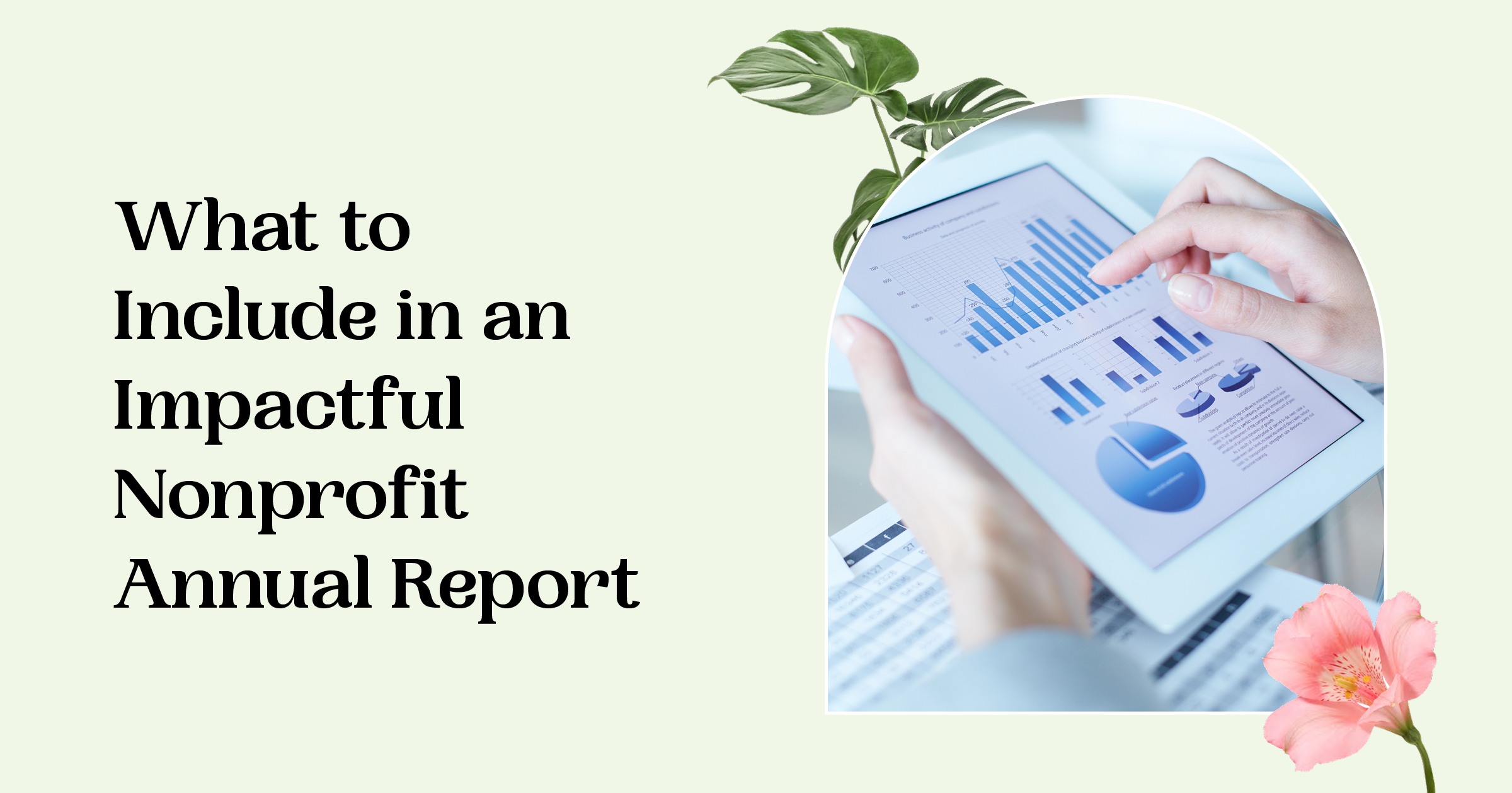It’s no secret that today’s donors are much more discerning about how they show their support for nonprofits. It’s not enough for your organization to have a compelling mission; you must also be honest, transparent, and accurate in all communications to maintain supporters’ trust. That includes your nonprofit’s annual report, one of the most crucial public-facing documents you publish annually.
How can you ensure your annual report includes the essential information supporters and community members need to continue trusting your organization? Let’s look at five must-have elements of an impactful nonprofit annual report using Bloomerang’s free annual report template as a guide:
1. Mission statement
Your nonprofit’s mission statement explains to the world what you do and how you do it. Including your mission statement at the beginning of your annual report serves multiple purposes:- Introduces new supporters to your cause. When prospective new donors research your cause, they’ll likely look at resources like your annual report to understand your organization’s mission and purpose. Starting the document with a strong mission statement helps them immediately understand what you’re all about. If they like what they read, they may decide to explore the rest of your website and even donate.
- Reminds existing supporters what they’re supporting. Current supporters reading your annual report will appreciate the reminder of what your organization stands for. Providing a mission statement is especially helpful if your mission has shifted over time.
Provides a unifying statement to tie your report together. Your nonprofit’s staff members can use your mission statement as a guiding force for creating your report. When deciding what to include and what to leave out, they can use the mission statement as a way to remind themselves which information matters most to your overall purpose and goals.
For example, check out how the Boys & Girls Clubs of America 2023 annual report features the mission statement front and center.

2. Financial information
Studies show that 75% of those who give regularly to new causes seek information about the nonprofit’s impact, and 68% want information on fundraising or overhead costs. Many donors view giving to your cause as an investment, and they want to see a high return on that investment. In other words, they want to know if your organization uses their gifts wisely to further your charitable aims.
Use multiple software solutions, including your online fundraising platform, accounting software, and donor CRM, to gather financial and fundraising information from the year. These metrics include:
- How you earned funding through fundraising campaigns, events, etc.
- How you used that funding, whether for programs, overhead, planning fundraising opportunities, etc.
- Total revenue and expenses
- Total new donors
- Total retained donors
Take the CARE 2023 annual report as an example. The report includes a valuable overview of the organization's activities to achieve its mission, how it receives financial support, and how it uses the funds it has earned. Supporters can easily see that the nonprofit focuses most of its funding on projects and programs that directly benefit their mission, including humanitarian and development work.

3. Project recaps and impact reports
Your audience will also be interested in some finer details about the projects, programs, and initiatives you pursued throughout the year in support of your mission. Supporters would be especially intrigued by any innovative new programs or fundraising solutions your organization took on this year.
Recap initiatives such as:
- Supporter-driven fundraising efforts, like peer-to-peer fundraising campaigns
- New programs, such as a new afterschool program for kids in your community or a new series of community workshops on financial literacy
- Events, including silent auctions or fundraising 5Ks
- AI fundraising initiatives, like predictive analytics
- Ongoing major campaigns, like comprehensive or capital campaigns
Include both quantitative and qualitative information to provide context for progress and impact reports. For example, let’s say you’re describing the impact of your annual fundraising gala and silent auction. You might include quantitative data about how many participants attended, how much the event raised, and how many beneficiaries the funding supported. You can supplement your recap with qualitative information, like quotes from attendees about how this year’s event was the best one yet.
4. Major donor and community partner recognition
Your nonprofit’s major donors and community partners provide the most significant support for your mission, so you should specifically thank them in your annual report.
Use your nonprofit’s donor management software system to identify your most impactful donors and community partners from the year. List major donors’ and partners’ names and giving amounts in your annual report.
You could even include an interview with a major donor, like the American Heart Association’s 2022-2023 annual report does. The report includes the story of a long-time volunteer and dedicated fundraiser who contributed a bequest to the organization.

The report also includes a list of top corporate donors and ways each organization specifically assisted the mission. These organizations supported everything from CPR training to nutrition security.

Think carefully about your organization’s top supporters and how you can feature them prominently in your annual report.
5. Supporter appreciation
Lastly, your annual report should always include a message of gratitude for the community of supporters and beneficiaries that keeps your nonprofit in motion. Your supporters and beneficiaries are the lifeblood of your organization, so you should feature them throughout your annual report.
Ensure your annual report is supporter-facing, meaning you use more second-person language than first-person. For example, instead of saying, “Our organization helped 15,000 community members recover from this year’s devastating tornado season,” you should write, “The generous support of our donors and community partners helped 15,000 community members recover from this year’s devastating tornado season.”
Additionally, incorporate supporter and beneficiary stories throughout your report to showcase the real people involved in your cause. You should include stories of community members such as:
- Beneficiaries
- Donors of all sizes
- Volunteers
- Advocates
- Board members
For example, The Mercy Corps 2023 annual report includes a short but impactful message of thanks for supporters, saying:
“Bold action like this—and in all of our programs—wouldn’t be possible without the collective efforts of our donors, partners, and the communities we serve. Thank you. Together, we are providing critical relief during emergencies, growing solutions to adapt to climate change, and forging a brighter future for all.”
As seen in this example, your gratitude message doesn’t have to be overly complex. A genuine statement from the heart will go a long way to show your community the irreplaceable role they play in your organization’s success.
These five elements will help build a strong foundation for your nonprofit’s annual report. But remember, your annual report isn’t just a compilation of facts; it’s an opportunity to recap the joyful moments of the past year and share your enthusiasm for the future. Give your report a hopeful, upbeat tone throughout to energize your audience and help inspire greater support for the next year.





Comments
Questions or comments? Join the conversation!